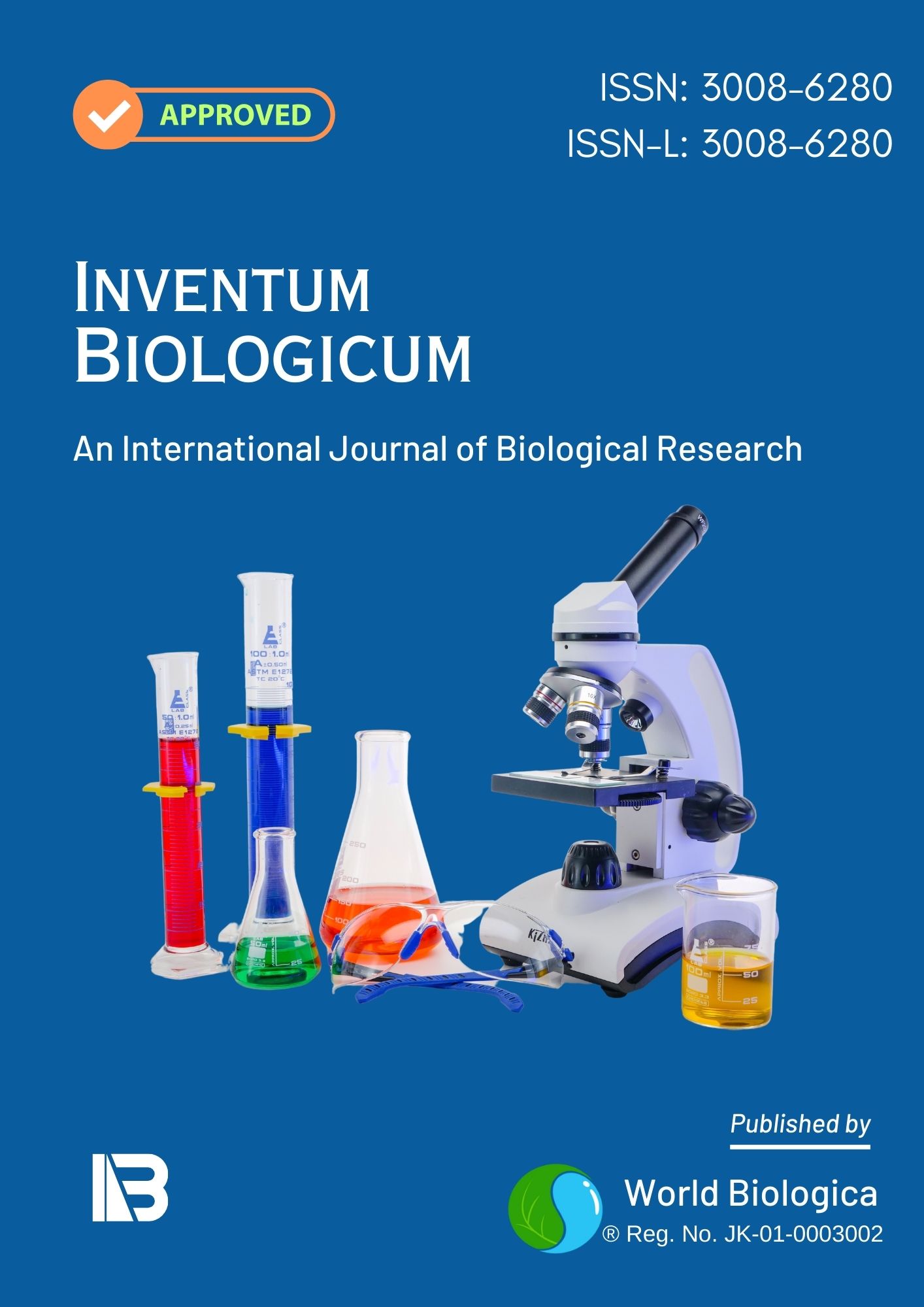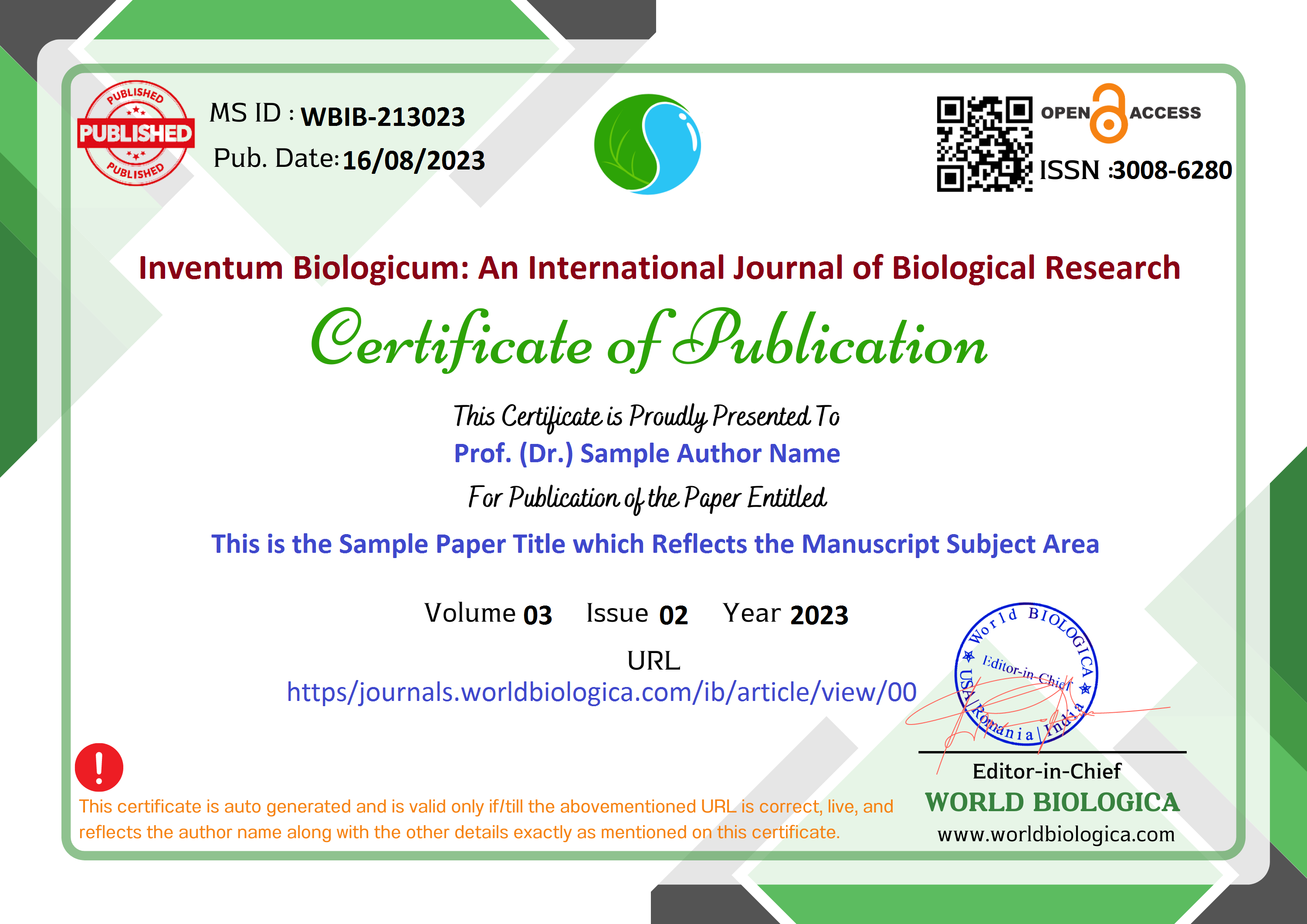Phyto-Chemical Investigation of Selected Medicinal Plant Species
Keywords:
Traditional medicine, Medicinal plants, Phytochemical screening, Antimicrobial activity, Minimum inhibitory concentrationAbstract
A significant public health issue is the development and spread of resistant microorganisms. There is a dire need for effective therapeutic options, especially those derived from historically utilised medicinal herbs. The primary purpose of this research was to screen for phytochemicals and test the medicinal plants for antibacterial activity that have been historically employed. Twelve medicinal plants were chosen using the FI (frequency index) of their ethnomedicinal uses. Various established procedures were used to screen groups of phytochemical substances. Flavonoids, alkaloids, glycosides, phenols, saponins, steroids, and terpenoids were all found to be present in the plant samples, with flavonoids, alkaloids, and phenols being the most numerous. Most of the therapeutic plants studied have been shown to have secondary metabolites. The discovery provides scientific proof for the usage of these traditionally used therapeutic herbs.
Downloads
References
Abdullahi, A. A. (2011). Trends and challenges of traditional medicine in Africa. African Journal of Traditional, Complementary, and Alternative Medicines, 8(5), Suppl., 115–123. doi:10.4314/ajtcam.v8i5S.5
Abebe, W., Zhang, W., Zhang, S., & Xie, G. (2018). Chemical composition and antimicrobial activity of essential oil from Justicia schimperiana. Journal of Pharmacognosy and Natural Products, 04(2), 2–4. doi:10.4172/2472-0992.1000154
Abera, B. (2014). Medicinal plants used in traditional medicine by Oromo people, Ghimbi District, Southwest Ethiopia. Journal of Ethnobiology and Ethnomedicine, 10(1), 40. doi:10.1186/1746-4269-10-40
Ali, H., Nguta, J., & Musila, F. (2022). Ole-mapenay I, matara D, Mailu J. Evaluation of antimicrobial activity, cytotoxicity, and phytochemical composition of Ocimum americanum L. (Lamiaceae). Evidence-Based Complementary and Alternative Medicine: eCAM, 2022, 154.
Al-Rimawi, F., Imtara, H., Khalid, M., Salah, Z., Parvez, M. K., Saleh, A., . . . Shawki Dahu, C. (2022). Assessment of antimicrobial, anticancer, and antioxidant activity of Verthimia iphionoides plant extract. Processes, 10(11), 2375. doi:10.3390/pr10112375
Alves, R. R. N., & Rosa, I. M. L. (2007). Biodiversity, traditional medicine and public health: Where do they meet? Journal of Ethnobiology and Ethnomedicine, 3(1), 14. doi:10.1186/1746-4269-3-14
Aslam, B., Wang, W., Arshad, M. I., Khurshid, M., Muzammil, S., Rasool, M. H., . . . Baloch, Z. (2018). Antibiotic resistance: A rundown of a global crisis. Infection and Drug Resistance, 11, 1645–1658. doi:10.2147/IDR.S173867
Aylate, A., Agize, M., Ekero, D., Kiros, A., Ayledo, G., & Gendiche, K. (2017). In-vitro and in-vivo antibacterial activities of Croton macrostachyus methanol extract against E. coli and S. aureus. Adv. Anim. Vet Sci., 5(3), 107–114. doi:10.14737/journal.aavs/2017/5.3.107.114
Belay, G., Tariku, Y., Kebede, T., & Hymete, A. (2011). Ethnopharmacological investigations of essential oils isolated from five Ethiopian medicinal plants against eleven pathogenic bacterial strains. Phytopharmacology, 1(5), 133–143. Google Scholar.
Cheesman, M. J., Ilanko, A., Blonk, B., & Cock, I. E. (2019). Developing new antimicrobial therapies: Are synergistic combinations of plant extracts/compounds with conventional antibiotics the solution? Pharmacognosy Reviews, 11(22), 57–72. doi:10.4103/phrev.phrev
Cheuka, P. M., Mayoka, G., Mutai, P., & Chibale, K. (2016). The role of natural products in drug discovery and development against neglected tropical diseases. Molecules, 22(1). doi:10.3390/molecules22010058
Fenollar, F., & Mediannikov, O. (2018). Emerging infectious diseases in Africa in the 21st century. New Microbes and New Infections, 26, S10–S18. doi:10.1016/j.nmni.2018.09.004
Fonkeng, L. S., Mouokeu, R. S., Tume, C. et al. (2015). Anti – Staphylococcus aureus activity of methanol extracts of 12 plants used in Cameroonian folk medicine. BMC Research Notes, 8, 4–9. doi:10.1186/s13104-015-1663-1
Habtamu, A., & Mekonnen, Y. (2017). Antibacterial potential of the 80 % methanol and chloroform extracts of Clematis hirsuta. African Journal of Pharmacy and Pharmacology, 11(16), 204–208. doi:10.5897/AJPP2016.4540
Lacmata, S. T., Kuete, V., Dzoyem, J. P., Tankeo, S. B., Teke, G. N., Kuiate, J. R., & Pages, J. M. (2012 (2010)). Antibacterial activities of selected Cameroonian plants and their synergistic effects with antibiotics against bacteria expressing MDR phenotypes. Evidence-Based Complementary and Alternative Medicine: eCAM, 2012, 623723. doi:10.1155/2012/623723
Lee, J. A., Uhlik, M. T., Moxham, C. M., Tomandl, D., & Sall, D. J. (2012). Modern phenotypic drug discovery is a viable, neoclassic pharma strategy. Journal of Medicinal Chemistry, 55(10), 4527–4538. doi:10.1021/jm201649s
M, B., Br, S., & Dk, S. (2016). Potential of herbal drug and antibiotic combination therapy: A new approach to treat multidrug resistant bacteria. Pharmaceutica Analytica Acta, 7(11). doi:10.4172/2153-2435.1000523
Mahady, G. B. (2005). Medicinal plants for the prevention and treatment of bacterial infections. Current Pharmaceutical Design, 11(19), 2405–2427. doi:10.2174/1381612054367481
Manandhar, S., Luitel, S., & Dahal, R. K. (2019). In vitro antimicrobial activity of some medicinal plants against human pathogenic bacteria. Journal of Tropical Medicine, 2019, 1895340. doi:10.1155/2019/1895340
Megersa, M., & Tamrat, N. (2022). Medicinal plants used to treat human and livestock ailments in Basona Werana District, North Shewa Zone, Amhara Region, Ethiopia. Evidence-Based Complementary and Alternative Medicine: eCAM, 2022, 5242033. doi:10.1155/2022/5242033
Meresa, A., Ashebir, R., Gemechu, W., & Teka, F. (2019). Ethno medicinal uses, phytochemistry and antimalarial effect of Croton Ethno medicinal uses, phytochemistry and antimalarial effect of Croton macrostachyus (Bisana): A review. Polymers, 11. doi:10.3390/polym11101682
Mesfin, F., Seta, T., & Assefa, A. (2014). An ethnobotanical study of medicinal plants in Amaro Woreda, Ethiopia. Ethnobotany Research and Applications, 12, 341–354. doi:10.17348/era.12.0.341-354
Sayed, E., Atwaa, H., Shahein, M. R. et al. (2022). Antimicrobial activity of some plant extracts and their applications in homemade tomato paste and pasteurized cow milk as natural preservatives. Journal of Biomolecular Structure and Dynamics, 1–16. doi:10.1080/07391102.2022.2130987
Schultz, F., Anywar, G., Tang, H., Chassagne, F., Lyles, J. T., Garbe, L. A., & Quave, C. L. (2020). Targeting ESKAPE pathogens with anti-infective medicinal plants from the Greater Mpigi region in Uganda. Scientific Reports, 10(1), 11935. doi:10.1038/s41598-020-67572-8
World Health Organization. (2013). Traditional medicine strategy 2014–2023 (pp. 1–76). Geneva: World Health Organization.
Downloads
-
Download PDF
 Abstract Views: 92,
Abstract Views: 92,  Download PDF: 65
Download PDF: 65
Published
How to Cite
Issue
Section
License
Copyright (c) 2022 Inventum Biologicum: An International Journal of Biological Research

This work is licensed under a Creative Commons Attribution-NonCommercial-NoDerivatives 4.0 International License.


















